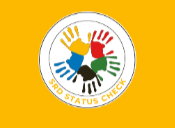The correct choice of an ATS system (Applicant Tracking System) in this environment of practicing competitive recruitment can either make or break your recruitment strategy. The tools available are many, but finding the best one demands a lot of work. ATS systems make hiring processes easier by automating them, enhancing their effectiveness, and combining or collecting all the candidates into one place. Nevertheless, not every ATS solution works the same.
This article delves deeper into some of the critical attributes that should be checked while evaluating different ATS systems, such as ATS integration, usability, and analytics among others. It does not matter whether you run a small enterprise or a big corporation, how to evaluate investments in the market will guarantee favorable returns in the future.
What is an ATS System?
An ATS system is used for recruitment management, ways of posting jobs, capturing the candidates’ applications, and other processes. Such systems enable employers and employees in recruitment to manage all the activities of recruitment from advertising the vacuum to the recruitment and incorporation of the new worker.
Today, these systems offer additional value by linking to other systems for example, ad agencies, social networking sites, statistics on applicants’ activities, and other auditable processes including screening of applicants and their proposals.
Factors of Consideration When Selecting an ATS System
When considering ATS systems, identify which features fit well with the hiring processes of your organization. Here are the most significant ones to assess:
1. ATS Integrations
The highest-rated ATS systems include other systems and platforms that enhance the understanding of the recruitment process. ATS integrations enable efficient workflow by reducing the need to open many applications at once.
- Job Boards and Career Sites: Integration with sites such as LinkedIn, Indeed, and Glassdoor allows recruiters to easily post jobs with a single click of a button.
- HR Software: Integration of the ATS with other HR systems will follow to facilitate new employee orientation and management of employee information.
- Interview Scheduling Tools: Links to embeddable calendars such as Google Calendar or Outlook enhance the ease of arranging meetings while minimizing the chances of errors.
- Assessment Platforms: Possible to combine pre-employment testing tools that include coding platforms and personality test assessments of candidates.
Check within your organization if the integrations are supported by the ATS. MyNextHire, for example, provides a great variety of popular tools which makes it easy to adapt to different workflows.
2. Simplified Interface For The Users
Recruitment software should help with the process rather than make it more difficult. A simple but effective ATS will allow recruiters, hiring managers, and candidates to interact safely.
- Clear Design: Simple dashboards allow instant visibility of important factors such as the number of candidates currently in play, the number of available positions, and the state of the hiring purgatory.
- Mobile Accessibility: An ATS that can be used on a smartphone enables management without being physically present which is beneficial especially for occupied recruiters.
- Flexible Workflows: The possibility of configuring hiring pipelines per roles or departments improves usability.
If it is well built, an Applicant Tracking System will increase productivity because it will shorten the time employees take to learn the system and increase the number of users of the system within the teams.
3. Recruitment Analytics
Making recruitment decisions based on data has become an integrating aspect to be considered to enhance recruitment activities. The most successful applicant tracking systems offer advanced analytics features to monitor effectiveness and spot the elements that hinder the process.
- Pipeline Metrics: Keep track of the amount of candidates at every level of the process and spot where the deferral happens.
- Source Effectiveness: Identify which sources are the most effective in bringing suitable candidates.
- Time-to-Hire: Assess the length of period taken to recruit new employees and determine the cause of delays in recruitment.
- Diversity Reporting: Provide statistics on the progress of achieving a more diverse workforce.
Recruitment analytics makes certain that every decision made regarding the employment of a candidate is based on specific quantitative metrics which in turn makes the process more effective and results in better candidates.
4. Scalability
Whenever you purchase an ATS you want it to be able to grow alongside your firm. Scalability ensures that the system can cope with increasing recruitment challenges as the company development takes place.
- Mass Recruitment: In the case of recruitment campaigns that involve a very large number of applicants, the ATS should be able to process thousands of applications in a seamless manner.
- Support Across Different Locations: In addition, for an international business, the need for different ATS hiring standard applications will be unavoidable.
- Job-Specific Modification: Change the designs of processes and related documents to fit the requirements of different positions or divisions.
With systems such as MyNextHire, the hiring approach of such companies will be more or less resilient twenty or fifty years into the future.
5. Candidate Experience
To attract high-quality applicants and to promote your organization’s brand, a positive candidate experience is essential. An ATS can directly influence how candidates view your company.
- Straight Forward Application Processes: One-click application option or uploading a LinkedIn profile has made it easy for applicants.
- Automated Updates: Send to the candidates timely notification regarding their progress in their application.
- Mobile-Friendly Portals: Enable candidates to apply for the job, submit required documents, and check their status via their mobile phone.
A candidate-friendly experience translates to increased participation and reduced chances of people dropping out during the application process.
6. Conformity and Security
The recruitment process entails the management of sensitive candidate information, hence making compliance with legal requirements a must. Securing the information should go on top of the priorities of the ATS.
- Data Encryption: Safeguard particular pieces of information such as CVs or addresses.
- Regulatory Compliance: Follow the GDPR, CCPA, and any other applicable regional data rights.
- Audit Trails: Sustain a record of the system’s operations to build trust and responsibility.
- Equal Opportunity Reporting: Use available metrics on hiring to ensure adherence to diversity and anti-discrimination laws.
This enhances the loyalty of candidates towards the organization with regard to engaging in ATS services as well as protecting the organization from any legal-related issues.
7. Features of Automation
Recruitment encompasses several activities that are repetitive least of which are resume screening, sending follow-ups, and scheduling interviews among others. With the help of ATS systems such manual efforts are eased:
- Resume Parsing: extraction of vital information contained in the resumes to enable ranking of candidates.
- Workflow Automation: adding rules to push candidates to the next stage, sending out emails for rejections, and even scheduling interviews.
- Interview Reminders: A system should be in place to remind all the involved parties in an interview on the day and time of the meeting to avoid the possibility of no-showing.
The Operating System has integrated various automation that makes the entire process of recruitment quicker and more efficient, thus saving time for the recruiters to engage with more strategic activities.
8. Cost and ROI
While price should not be the sole determinant, it’s important to choose an ATS that offers value for money.
- Flexible Pricing Models: Look for systems with scalable pricing based on your hiring needs.
- Long-Term ROI: Evaluate how the ATS reduces time-to-hire, improves candidate quality, and enhances recruiter productivity.
- Free Trials or Demos: Take advantage of these to assess whether the system meets your needs.
An ATS that delivers measurable ROI justifies its cost, making it a worthwhile investment.
How MyNextHire Fits the Criteria
Though many ATS platforms are available, companies like MyNextHire offer advanced features tailored to modern recruitment challenges. They provide robust ATS integrations, customizable workflows, and actionable recruitment analytics, ensuring a seamless hiring experience.
By leveraging tools that focus on automation, scalability, and compliance, MyNextHire demonstrates the value of an all-in-one ATS system without overcomplicating processes.
Conclusion
Selecting the right ATS system requires evaluating its ability to integrate with existing tools, provide data-driven insights, enhance candidate experiences, and support future growth. Features like ATS integrations, user-friendly design, and recruitment analytics are essential for modern hiring success.
An ATS is more than just software, it’s a strategic partner in achieving hiring goals. By carefully comparing available options, businesses can choose a tool that not only meets their current needs but also scales with their growth.
Investing in the right ATS today lays the foundation for more efficient, effective, and data-driven recruitment processes tomorrow.

